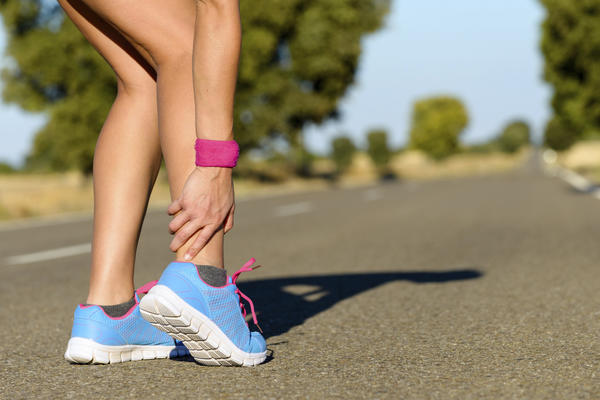|
Sedentary postures, smoking, drinking alcohol, eating junks and inactive lifestyle factors cause harmful effects on the human body. Latest research shows that sitting might be more harmful than smoking these days! High-intensity exercises have been glorified by fitness experts and people alike, but numerous studies have changed our perspective and shifted our passion towards moderate-intensity exercises as they are linked to lower occurrences of heart disease, cancers and other illnesses when practiced regularly.
Walking is still the best form of moderate-intensity exercise as it’s easy, free, independent of external factors and requires only a comfortable pair of shoes and clothes. Most of us have been walking since we were one year old and we need no help in getting up and going for a brisk walk down the street or park. Ironically, walking is not as easy as it sounds to everyone living across the world. It torments some people irrespective of their age due to certain illnesses or health conditions that cause voluminous leg pain after walking. Conditions such as arthritis that cause knee and hip creaks are common and well-known, whereas others such as periphery artery disease are not. Let’s look into the unfamiliar and unexplored conditions that can cause pain after walking, and also solutions to reduce the overall pain and ease the process. Peripheral Artery Disease Peripheral artery disease is one form of atherosclerosis that has the ability to cause strokes or heart attacks. Here, arteries become narrowed due to fat and cholesterol-filled plaque and these are the same arteries that supply blood to the leg muscles. The person experiences cramping in the buttocks, thighs, calf (most common) or foot due to insufficient blood flow from the arteries. This pain is due to the worked-up muscle cells that are deprived of oxygen supply due to restricted blood flow. When such people walk, the pain shoots up drastically and stops not until the person stops walking and slowly diminishes with rest. The risk factors are similar to heart attack and stroke-smoking, high cholesterol levels, high blood pressure and diabetes. Common signs of this disease include a diminished pulse below the narrowed artery, bruises and scratches in the lower leg that don’t heal and pale/cool skin. Peripheral artery disease by itself is a serious one, but this can be an indication of a much more serious and complex problem such as heart attack, stroke or transient ischemic attack. These people are 6-7 times likelier to be affected by such serious health problems. Trying to walk ignoring the pain will not show any positives effects on these people. What they need is a professionally structed exercise program that motivates them to walk (even if it is only for a few minutes) until pain erupts, rest until the pain goes off and then walk again. Such sessions serve to be useful if individuals do it for at least 30 minutes on as many days as possible in a week. Physicians prescribe low doses of medications to relieve pain sometimes. Certain people experience pain even during rest, mostly in the feet. When pain does not reduce even after exercising and medication, the doctor might suggest surgery to reopen the blocked artery. Chronic Venous Insufficiency This too deals with improper blood flow just like peripheral artery disease but involving the veins and the blood flow back to the heart and lungs. Arteries are active participants and veins are the passive ones in blood flow. In this disease, the blood remains circulating in the legs and feet without travelling back to the heart. Swelling and inflammation of the skin and the connective tissue underneath it are typical symptoms. Legs seem to ache, there is extreme pain in the groin or thigh while walking and this pain takes longer time to subside with rest than in the case of peripheral artery disease. Pain is usually relieved by lying down on your back and using a pillow to raise your legs such that blood flows back to the heart. While sitting too, moving your toes up and down several times can flex the vein-pumping leg muscle. Intense pain is curbed with compression stockings or surgical procedures. Varicose vein treatment procedures have drastically improved where the affected vein is permanently closed instead of being removed from the body. Lumbar Spinal Stenosis Stenosis is the medical term to indicate any kind of narrowing. Spinal stenosis can happen anywhere in the spine and the pain is due to mechanical pressure and the lack of blood flow to the nerves. Lumbar region of the spine forms the small of the back and spinal stenosis in this region is indicated by lower back pain, but it is mostly the legs that are affected. Similar to peripheral artery disease, the individual experiences cramping tightness in the thigh that increases with walking. The legs seem to be weak and numb. Diagnosis involves reading medical history and discussing symptoms. The physician usually asks whether the pain eases when the back is curved forward or flexed as this posture relieves pain in the lumbar region. An MRI or CT scan is often taken, and imaging studies are most unlikely to be performed for checking out this problem. Physical therapy and exercises are taught to relieve pain and strengthen the back. When pain becomes unbearable medications are prescribed and surgery remains the last resort when there is persisting pain. Diabetic Neuropathy People with diabetes often suffer from nerve damage or neuropathy and the actual reason behind this is still unclear. Increase in sugar levels damage the tiny blood vessels that supply nerves leading to nerve strokes. Diabetes also depletes the body’s store of neurotrophic peptides, chemicals that repair and regenerate nervous tissue. Both, the upper and lower leg can be affected by diabetic neuropathy. In the upper leg, pain is mostly felt only in one leg and in the lower leg, symptoms include numbness and tingling in both legs equally. Such numbness can leave sores on the feet go unnoticed which further worsens them, especially when the individual is a diabetic. The problem can be avoided by maintaining blood sugar levels but there is no evidence supporting improvement in individuals who maintain their sugar levels once the nerves have been damaged. Staying on a healthy weight and following a well-nourished diet help to maintain blood glucose levels. Individuals interested in taking up a healthy diet can get in touch with reputed dietitians/nutritionists at www.firsteatright.com. Walking with diabetic neuropathy is difficult, but symptoms improve with exercise. Medications are sometimes prescribed to reduce pain. Comments are closed.
|
AVOID FRAUD. EAT SMART.+91 7846 800 800
AuthorDietitian & Nutritionist Dr. Nafeesa Imteyaz. Archives
July 2024
Categories
All
Dr. Nafeesa's Blog @blogspot |
- Home
- Written Testimonials
- Consult
- Clinics
- Blogs
-
Diet & Nutrition
- Diabetes Reversal
- IVF IUI not needed for PCOS PCOD Infertility
-
Medical Nutrition
>
-
Disease & Conditions
>
- Infertility | PCOS
- Diabetes Mellitus
- Cholesterol
- Hypothyroid
- Kidney Problems
- Hypertension
- Cardiovascular Diseases
- Liver Diseases
- Gastro intestinal disorder
- Cancer
- Metabolic Disorders
- Orthopedic Disorders
- Eating Disorders
- Dietary Recall
- Weight Record Filled By Clients
- Online Payment Transaction Details
- Online Clients Weight Check Form
- Our Program Package Service Charges
- Weight Record 2017 Clients
- Measurements sent by Clients
- Terms & Conditions Of Payment
- Thanks. Your Form is Submitted
- Video Testimonials
- Lifestyle & Wellness
- Lifestyle & Wellness Blog
- Allergy & Intolerance
- Weight Loss / Gain
- Weight Loss / Slimming Blog
-
Disease & Conditions
>
- Life Cycle Nutrition >
- Sports Nutrition >
- Integrity in Nutrition
- Knowledge Centre
© COPYRIGHT 2022. ALL RIGHTS RESERVED. FRST HEALTHCARE PVT LTD.
Dr. Nafeesa Imteyaz of First Eat Right clinic, is the Best Dietitian Nutritionist in Bangalore. Best Dietitian Nutritionist in Pune. Best Dietitian Nutritionist in Hyderabad. Best Dietitian Nutritionist in Chennai. Best Dietitian Nutritionist in Mumbai. Best Dietitian Nutritionist in Delhi. Best Dietitian Nutritionist in Kolkata.


